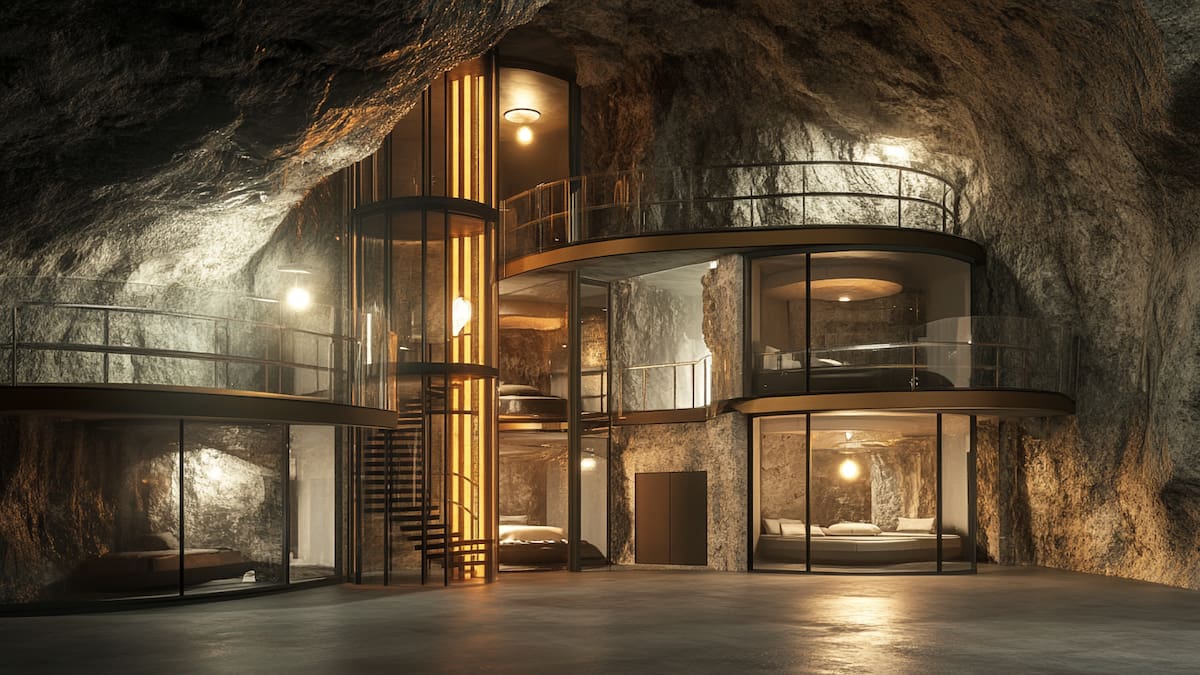Nobody appeared to know anything concrete, just whispers and speculation. Paranoid billionaires are hardly going to signpost their subterranean hideouts – places intended for them to jet away to in private: Quiet corners of the earth away from nuclear war, famine and disease.
In 2020, as the Covid-19 pandemic shut down the world, the rumour mill wound up with stories of wealthy Americans building doomsday-style boltholes around Queenstown to hunker down and ride it out.
Locals thought it was all patent nonsense.
“To be honest, it makes me laugh because I’m not aware of any bunkers,” then-mayor Jim Boult told CNN.
Plenty of wealthy foreigners bought property in New Zealand though, including Hollywood director James Cameron and billionaire PayPal co-founder Peter Thiel, who bought near Queenstown and who scrapped plans for a sprawling retreat built into the earth on the shores of Lake Wanaka last year.
Then, in 2024, the Herald had another tip-off, this time about a bunker outside Queenstown. Builders and contractors were signing non-disclosure agreements. There was no official paper trail. Again, it was all hush-hush.
But now it can be confirmed for the first time that a doomsday bunker has indeed been built in New Zealand.
US-based company Safe (Strategically Armoured & Fortified Environments) has been providing high-tech customised security systems for the mega-wealthy for years.

Founder and president Albert Corbi confirmed they had worked on a project in New Zealand.
“The one client/family group in New Zealand that Safe worked with had an underground shelter as their primary focus,” Corbi told the Herald.
“They were interested in New Zealand because of its natural beauty, isolation, and other security-related considerations, which I cannot share.”
Citing privacy and security reasons, he would not divulge exactly where the underground shelter is located — or even if it is in the North Island or South Island.
He was similarly tight-lipped on the project’s budget, only revealing that the average “entry-level” shelters start at about US$1million ($1.75m).
Safe worked on the world’s first billion-dollar home in India and designed a single $103m estate in the US, which he says can “protect 28 people from every known threat — short of the Earth tipping off its axis.
Corbi says he has helped safeguard “hundreds” of individuals, estates, corporate headquarters, and superyachts around the world.

And next year, Safe aims to unveil its most ambitious project yet. Membership-based club Aerie is said to be a US$300m network of uber-luxurious underground residential bunkers across 50 US cities and a planned 1000 affiliate global locations.
The fortified private properties can come with a staggering array of innovations and luxury features, from biometrically activated shotgun walls, hydroponic pods, decontamination chambers, fully-equipped surgical theatres, gourmet dining kitchens, indoor climbing walls and gyms, gun ranges, swimming pools, even F1-style racing circuits.

About 20 years ago, technology reached a point where living in an underground shelter wasn’t only possible – it was comfortable, Corbi says.
But now, he believes that humans can stay “completely secure, with everything they need, for 50 years or more without sacrificing quality of life”.
While he shies away from the term “doomsday”, saying it feels “a bit dramatic to me, like something out of a blockbuster movie”, he says Safe prefers to focus on what they consider “real, tangible threats”, including “localised nuclear events (think terrorist attacks), power grid failures … and supply chain disruptions”.
“These are the scenarios that can spiral into civil unrest and potentially global chaos,” Corbi says.
“It’s not about fearmongering — it’s about being prepared for what’s actually likely to happen in the near future.”
Kurt Bayer is NZ Herald South Island Head of News based in Christchurch. He is a senior journalist who joined the Herald in 2011.






